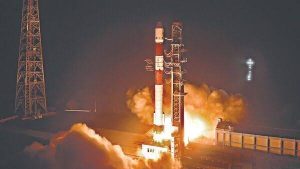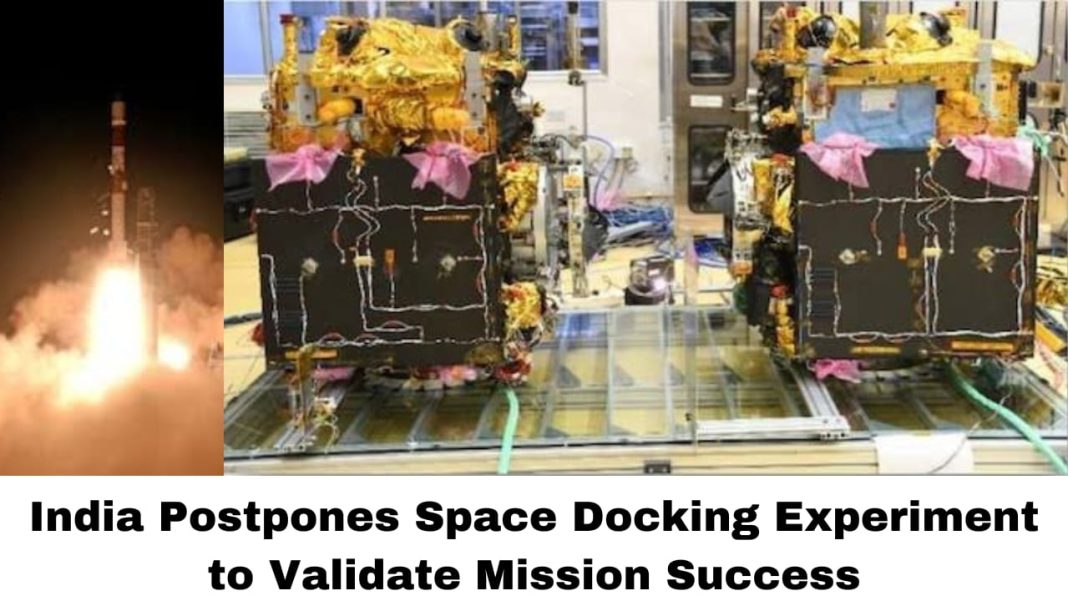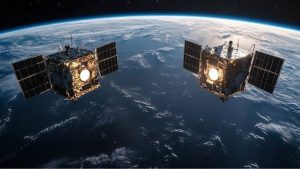Digital News Guru Technology Desk:
India’s ambitious Space Docking Experiment (SpaDeX) has been postponed from its original schedule of January 7, 2025, to January 9, 2025. The Indian Space Research Organisation (ISRO), responsible for the mission, announced the delay to allow additional ground simulations after identifying a potential abort scenario. This move underlines ISRO’s focus on meticulous validation to ensure the success of this critical mission.
Understanding SpaDeX and Its Importance
SpaDeX represents a major leap in India’s space capabilities, aiming to achieve autonomous docking and rendezvous in space. The experiment involves two 220-kilogram satellites, aptly named “Chaser” and “Target”, which are designed to perform precise orbital maneuvers, meet in low Earth orbit, and physically dock with each other.

Docking in space is an advanced and highly sophisticated technology that only a few countries, including the United States, Russia, and China, have mastered. It is a cornerstone for missions that require satellite servicing, refueling, and assembling modular space stations. By successfully demonstrating this capability, SpaDeX could position India as a leader in space technology.
Mission Details and Recent Developments
The SpaDeX mission launched on December 30, 2024, aboard an indigenously developed Indian rocket. In addition to the docking demonstration, the mission includes multiple experiments, such as testing the effects of microgravity on biological organisms. For instance, a set of cowpea seeds sent as part of the mission has germinated and sprouted leaves, providing critical insights into plant growth in space—a factor crucial for long-term human habitation missions.
The decision to postpone the docking experiment came after ISRO identified a potential abort scenario during initial tests. The organization opted for additional ground simulations to validate the systems’ robustness and functionality. Speaking about the delay, ISRO officials emphasized that “mission success is paramount” and that further validations are essential to mitigate risks.
Why This Mission Matters
The SpaDeX mission holds enormous significance for India’s space exploration ambitions. Here’s why:
- Satellite Servicing and Sustainability: With the growing reliance on satellites for communication, navigation, and Earth observation, being able to service and refuel satellites in orbit could significantly extend their operational lifespan and reduce space debris.
- Support for Future Space Stations: SpaDeX will provide the foundational technology for India’s planned indigenous space station. Autonomous docking is vital for assembling modular components of space stations and for crewed missions.
- Human Spaceflight Program: SpaDeX aligns with ISRO’s broader goals of advancing its Gaganyaan human spaceflight program, paving the way for more complex missions involving human-crewed docking maneuvers.
- Global Commercial Opportunities: A successful demonstration will position India as a competitive player in the global space services market, offering cost-effective solutions for satellite maintenance and orbital operations.
Challenges in Space Docking
Space docking is a technically challenging endeavor due to several factors, including:
- Precise Navigation: The “Chaser” satellite must align its trajectory perfectly with the “Target” satellite while traveling at speeds of approximately 28,000 km/h.
- Autonomous Operations: Docking systems must operate autonomously, relying on sensors, cameras, and algorithms to ensure accurate positioning and contact.
- Safety Concerns: Even a minor error could result in a collision, potentially damaging both spacecraft and creating hazardous debris.
Given these challenges, ISRO’s decision to delay the experiment to ensure thorough preparation reflects its commitment to excellence.
The Broader Implications
SpaDeX represents more than just a technological milestone. It is a symbol of India’s growing stature in the global space community. The experiment is expected to contribute significantly to international collaborations, especially with nations looking to expand their space operations cost-effectively.
Moreover, the mission aligns with India’s vision to increase its share of the global commercial space market from the current 2% to a target of 10% by 2033. With increased government funding and a growing startup ecosystem, SpaDeX could open new avenues for innovation and partnerships.
Looking Ahead
As SpaDeX prepares for its revised schedule, expectations remain high. A successful demonstration of autonomous docking would be a landmark achievement, not only for ISRO but for the global space community. It will signal India’s readiness to undertake more ambitious missions, including interplanetary exploration and lunar habitation.

In the coming days, ISRO will conduct rigorous tests to address potential challenges, ensuring that SpaDeX achieves its objectives. This calculated approach, while requiring patience, demonstrates the organization’s unwavering focus on reliability and precision in space exploration.
You May Also Read: Tamil Nadu CM M.K. Stalin Announces $1 Million Prize to Decode the Indus Valley Script









